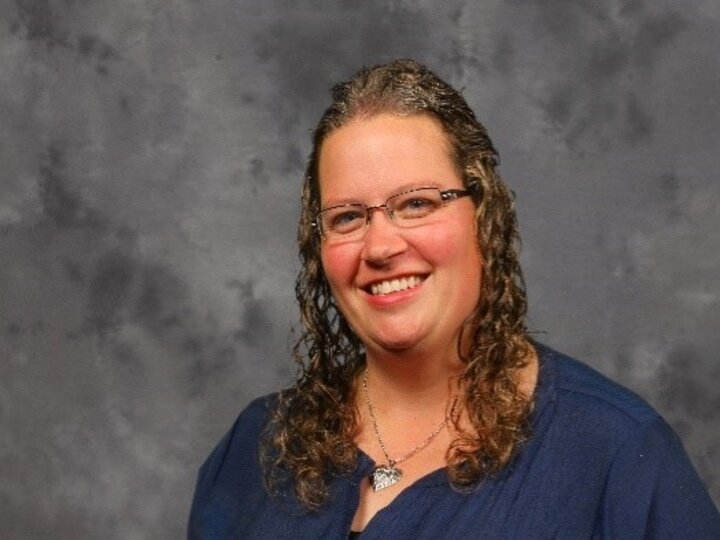Nebraska Extension Educator - Holt/Boyd Counties - Ladonna Werth
Nebraska Extension Educator - Holt/Boyd Counties - Amy Timmerman
Nebraska Extension Educator - Holt/Boyd/Garfield/Loup/Wheeler Counties - Bethany Johnston
Nebraska 4-H Assistant - Holt/Boyd Counties - Debra Walnofer
For the week of October 6, 2024
October 6-12: National 4-H Week
October 12-13: Nebraska 4-H Shooting Sports Instructor Training, Ashland Gun Club, Ashland, NE, Register - https://go.unl.edu/4gcv
October 20: Holt County 4-H Achievement Ceremony, 3:30pm, Farmers Market, Atkinson, NE
November 2: 4-H Shooting Sports Instructor Initial Workshop, 8:00am-6:00pm, Trenton Community Building, Workshop Information & Registration - https://go.unl.edu/08qk
November 2: 4-H Shooting Sports Instructor Update Workshop, 8:30am-12:00pm, Trenton Community Building, Workshop Information & Registration - https://go.unl.edu/d8hf

LaDonna Werth, Extension Educator
Phone: 402-336-2760
E-mail: LWerth2@unl.edu
Belonging
School is back in full swing, so the rush of activities, events, and programs is again at an all-time high! Opportunities to belong to different groups and teams are essential to youth development to help with self-identity, supportive environments, and fostering their ideas and abilities. However, “belonging” is much deeper than being a part of a team; the interactions within the group have the most impact on youth. Belonging can look different depending on the individual's needs but can be divided into three buckets: positive relationships with youth and adults, inclusive environments, and safety (4-H Thriving Model, Arnold,2018).
Positive relationships with youth and adults play a vital role in belonging. Positive youth-adult relationships are built when youth feel they have adults they can depend on, have positive interactions with, and feel safe, trusted, and nurtured. Youth also need to build friendships to help them develop emotionally and morally. Youth can gain skills in communicating, cooperating, and solving problems while also practicing control of emotions and responding to the feelings of others. Adults can implement friendship-building behaviors intermixed with activities and highlight the importance of cooperation among the competitive factors built into youth activities.
Creating an inclusive environment is evident when young people feel welcome regardless of their background, beliefs, ideas, and culture. Adults can promote inclusivity by encouraging, supporting, and giving positive and specific feedback. Simple ideas to help create inclusive environments are getting matching t-shirts for everyone, having a welcome question of the day to allow each child to answer, being empathetic, and being aware of bias to close the gaps between members. This will help foster friendship among youth because they can follow examples to build up rather than tear down and judge others. See positive behaviors? Name them and keep encouraging them.
Building a safe environment is essential for youth to physically and emotionally belong. In secure environments, young people will not fear emotional or physical harm from the learning environment, adults, other participants, or other spectators (Arnold, 2018). Youth can express their ideas without judgment and are more willing to take responsible risks without feeling judged based on the results, allowing growth, development, and problem-solving skills to get youth where they want to be.
Building teams with positive behaviors between members - youth and adults - and creating inclusive and safe environments can set them up to create a greater sense of belonging for youth members. These factors could positively impact school performance and mental and emotional well-being and promote positive youth development.
For more information about positive youth development through Nebraska 4-H, visit 4h.unl.edu/pyd. For more information about this article, contact Mickayla Blender, 4-H Youth Development Educator in Harlan and Furnas Counties, at mblender2@unl.edu
Source: Mickayla Blender – UNL 4-H Youth Development Extension Educator (UNL For Families – October 7, 2024)

Amy Timmerman, Extension Educator
Phone: 402-336-2760
E-mail: atimmerman2@unl.edu
Fire Safety During Harvest Season: Essential Tips for Farmers
As we enter fall harvest, much of Nebraska is facing abnormally dry to severe drought conditions. Plus, this week we have been red flag warning for fire. With weather conditions ripe for quick-moving fires, the risk is heightened by modern farming equipment, which has become larger and more complex over the years. Today's combines - often made with synthetic materials - can easily catch fire, especially when hydraulic leaks or fuel spills come into contact with smoldering crop residue.
Recent studies have shown that most combine fires begin in the engine area, with 76.7% of incidents stemming from contact between crop residue and hot components like exhaust manifolds or turbochargers. When a fire ignites, it can spread rapidly, especially if fuel lines or hydraulic hoses rupture.
Fortunately, advancements in equipment design have improved fire safety features. For instance, newer combines have more powerful radiator fans and strategically placed air intakes to minimize the risk of flammable materials entering critical areas.
Preventing Combine Fires: Key Strategies
- Keep Equipment Clean: Regularly clean your combine, especially around the engine and exhaust areas. Use battery-powered leaf blowers or air compressors to clear debris. Power washing can also remove grease and oil that may accelerate a fire.
- Park Smart: Allow combines to cool down before parking them in sheds. If parking in the field, choose fire-resistant surfaces and consider creating firebreaks by disking areas around parked equipment.
- Monitor Engine Load: Excessive stress on engines can increase fire risk. Be aware that newer engines generate higher temperatures due to emissions standards.
- Check Bearings: Overheating bearings can cause fires. Use an infrared thermometer to monitor bearing temperatures and shut down the machine if temperatures exceed safe levels.
- Harvest Responsibly: Avoid harvesting during extreme fire weather. Be particularly cautious between 2 and 4 pm, when conditions are often the most dangerous.
Preparation is Key
- Start harvesting from the downwind side of fields to minimize fire spread risk.
- Keep a cell phone handy for emergencies.
- Carry a 10 lb ABC fire extinguisher in the combine cab, and remember the PASS technique: Pull the pin, Aim the nozzle, Squeeze the trigger, and Sweep across the base of the fire.
- Ensure all extinguishers are regularly checked and maintained.
What to Do if a Fire Occurs
- Move the Machine: If safe, pull the combine into areas that have already been harvested.
- Turn Off the Engine: This prevents the air intake from feeding the fire.
- Call for Help: Dial 911 as soon as possible, providing clear directions for emergency services.
- Contain the Fire: If the fire is beyond control, focus on preventing it from spreading to nearby vegetation.
Final Thoughts
While proper maintenance and awareness can significantly reduce fire risks, it’s crucial to remember that fires can still occur. Stay vigilant this harvest season:
- Clean combines regularly.
- Monitor engine temperatures and bearing conditions.
- Ensure effective communication among crew members.
- Prioritize safety over equipment - no piece of machinery is worth risking a life.
By taking these precautions, we can help protect our farms, our communities, and ourselves during this critical time. Stay safe out there!
Source: Amy Timmerman – UNL Extension Educator (CropWatch – October 2, 2024)

Bethany Johnston, Extension Educator
Phone: 402-336--2760
E-mail: bjohnston3@unl.edu
Plan Now to Purchase Your Hay Supplies
Nebraska hay production has bounced back from 2022 lows, declining pasture conditions remind us to plan fall, winter, and next spring’s hay needs sooner rather than later. Inventory feed and hay resources now to know what is needed. Checking prices and availability now will go a long way toward reducing the anxiety of what we will feed our cows this fall and winter.
Finding hay prices and/or hay to buy
The Nebraska Direct Hay Report offers the most current Nebraska hay prices reported by region. In addition, hay prices from surrounding states can be found at the USDA Market News Hay Reports. The Nebraska Department of Agriculture Hay and Forage Hotline offers a free listing for both buyers and sellers.
Be sure to check local and regional resources, such as newspaper and trade magazine ads. Additional resources may be found by searching online and social media.
Tips for pricing hay and assessing bale quality
Feed inputs often make up the largest portion of a producer’s costs. With that in mind, we do need to be aware of a few principles in purchasing hay.
- Determine whether you are paying on a per ton or per bale basis.
- Know the hay quality you are purchasing to spend your feeding dollars more effectively.
- Buy bales that are tightly rolled, dense, and have square shoulders that don’t sag.
- Net wrap helps bales shed water.
- Bales should be free of mold, weed seeds and dangerous levels of nitrates (depending on the forage species).
The class of animals (heifers vs. cows, dry vs. lactating, thin vs. fat condition, etc.) that will consume the hay will determine the quality of hay needed. If possible, buy hay that will best match those requirements. However, quality of hay can be supplemented with additional protein and energy sources to meet those requirements if higher quality hay is hard to source.
Use a lab analysis to determine hay quality. Core sample 15-20 bales from each lot and send the samples to a lab for testing. Tests can cost around $18 for Near Infrared Spectroscopy (NIRS) to $28.50 for wet chemistry. These tests calculate moisture content, crude protein (CP), relative feed Value (RFV), relative forage quality (RFQ), and additional information including mineral content and nitrate levels. More information can be found at in the Nebraska Extension publication, Sampling Feeds for Analyses.
Storing and feeding hay
Livestock producers should locate hay bale yards in a well-drained area out in the open with easy access in the winter for feeding. Rows should line up north to south, at least 3 ft apart, so sunlight will reach a greater portion of the bale. This will help evaporate moisture from the bales and the ground around them quickly. The Beefwatch article, “Keep it Tight; Store Hay Right” offers more tips on storing hay.
If possible, weigh bales with a scale to get accurate weights when planning your winter feeding. If you are feeding hay that may contain noxious/invasive weeds or non-native forage species, feed this hay in a limited area, so if a problem does develop, it can be kept isolated and, hopefully, controlled.
While Nebraska's hay production has rebounded from the lows of 2022, the recent dry conditions remind us that checking hay inventories, prices, and forage quality now can mitigate potential feeding challenges during the colder months.
Randy Saner - Nebraska Extension Educator | T.L. Meyer - Nebraska Extension Educator (BeefWatch – September 27, 2024)